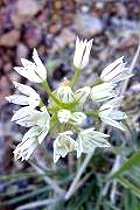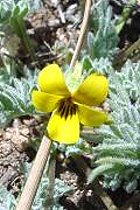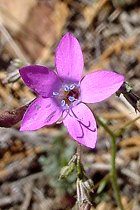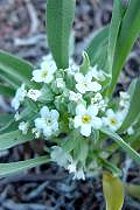




 |
 |
 |
 |
 |
| L-R: Echinocereus engelmannii (Hedgehog cactus), Allium lacunosum var. davisiae (Davis's pitted onion), Viola douglasii (Douglas's violet), Gilia leptantha ssp. leptantha (Fine flower gilia), Cryptantha cinerea var. abortiva (Bownut cryptantha) |
| California Plant Names: Latin and Greek Meanings and Derivations An Annotated Dictionary of Botanical and Biographical Etymology Compiled by Michael L. Charters |